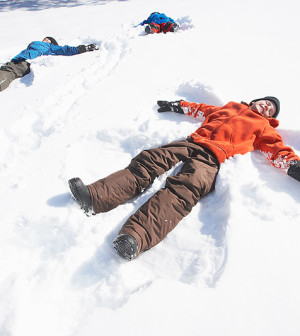- Navigating Your Midlife Crisis: Embracing New Possibilities
- City Raccoons Showing Signs of Domestication
- Mapping the Exposome: Science Broadens Focus to Environmental Disease Triggers
- One Week Less on Social Media Linked to Better Mental Health
- Your Brain Changes in Stages as You Age, Study Finds
- Some Suicide Victims Show No Typical Warning Signs, Study Finds
- ByHeart Formula Faces Lawsuits After Babies Sickened With Botulism
- Switch to Vegan Diet Could Cut Your Greenhouse Gas Emissions in Half
- Regular Bedtime Does Wonders for Blood Pressure
- Dining Alone Could Mean Worse Nutrition for Seniors
Repetitive Pitching May Cause Teens Serious Shoulder Problems


Young athletes who pitch more than 100 balls a week risk getting a painful overuse injury that can hamper normal shoulder development, new research shows.
The injury is called acromial apophysiolysis, and the researchers said it can lead to additional problems, including rotator cuff tears.
“There is no problem with teenagers pitching in baseball. The problem is if you overdo,” said Dr. Johannes Roedl, a radiologist in the musculoskeletal division at Thomas Jefferson University Hospital, in Philadelphia.
“I encourage parents to have their kids play sports, but don’t have your kid repeatedly do the same movements, and pitching is one of them,” Roedl said.
The acromion — which forms the bone at the top of the shoulder — develops from the fusion of four individual bones during adolescence. But Roedl found that overuse injuries involving the acromion before age 25 were linked with incomplete fusion later.
For the study, published online Oct. 14 in the journal Radiology, the researchers looked at records of more than 2,300 male and female patients, aged 15 to 25. All had undergone an MRI between 1998 and 2012 after complaining of shoulder pain. Most were baseball or softball pitchers.
Close to 3 percent had pain at the top of the shoulder and incomplete fusion of the acromion. Roedl compared these patients with a similar group without the condition and studied their pitching histories.
Throwing more than 100 overhead pitches a week, in training and in games, was a substantial risk factor for developing the condition, he said.
Of those with the overuse injury, 40 percent said they had pitched more than 100 balls weekly. In the comparison group, just 8 percent had pitched that much.
All the injured players laid off pitching for three months. One had surgery; the rest were given non-steroidal anti-inflammatory drugs.
MRIs or X-rays were done at least two years later, after the players turned 25. While 86 percent of the players with the overuse injury had incomplete fusion of the acromion, only 4 percent of the healthy players did.
More than two-thirds of the overuse group had also suffered rotator cuff tears compared to 29 percent of the others, and the tears were more severe in the overuse group, the study found.
While this issue is not common, it can be a problem, said Dr. Michael Shepard, an orthopedic surgeon at Hoag Hospital Orthopedic Institute, Newport Beach, Calif., and a team physician for the Los Angeles Angels of Anaheim.
The take-home message is clear: Avoid over-pitching, said Shepard, who wasn’t involved in the study.
Overuse injuries are more common in warm weather states, where many children play baseball and other sports year-round, he said.
“Don’t have your kid play year-round ball, and don’t have them pitch year-round,” he advised. “Have them keep overall play under nine months. Have them keep pitching [to] under six months.”
Professionals typically take three months off, he noted.
Dr. Craig Spurdle, an orthopedic surgeon at Miami Children’s Hospital in Florida, agreed that year-round play is ill-advised.
Whether 100 pitches weekly is viewed as a lot or a little “depends on the age,” said Spurdle, who had no role in the study.
The American Sports Medicine Institute says pitchers between 15 and 18 years old shouldn’t play more than two games a week and they should limit pitches to 50 a game.
More information
For more on preventing overuse injuries, visit StopSportsInjuries.org.
Source: HealthDay
Copyright © 2025 HealthDay. All rights reserved.










